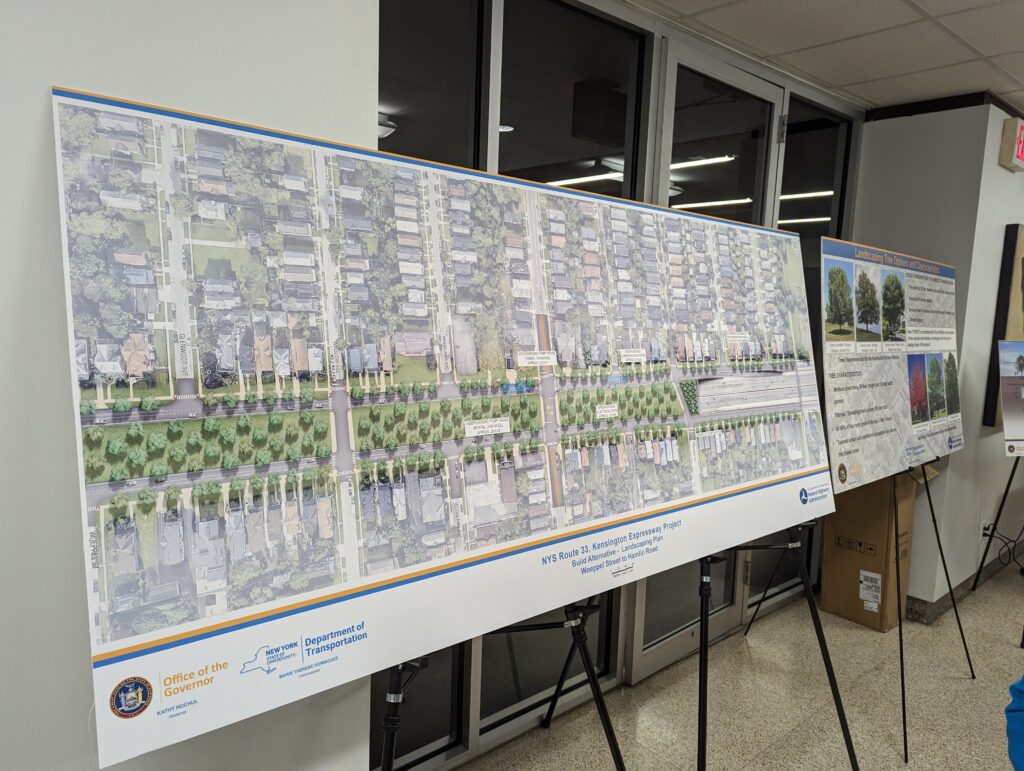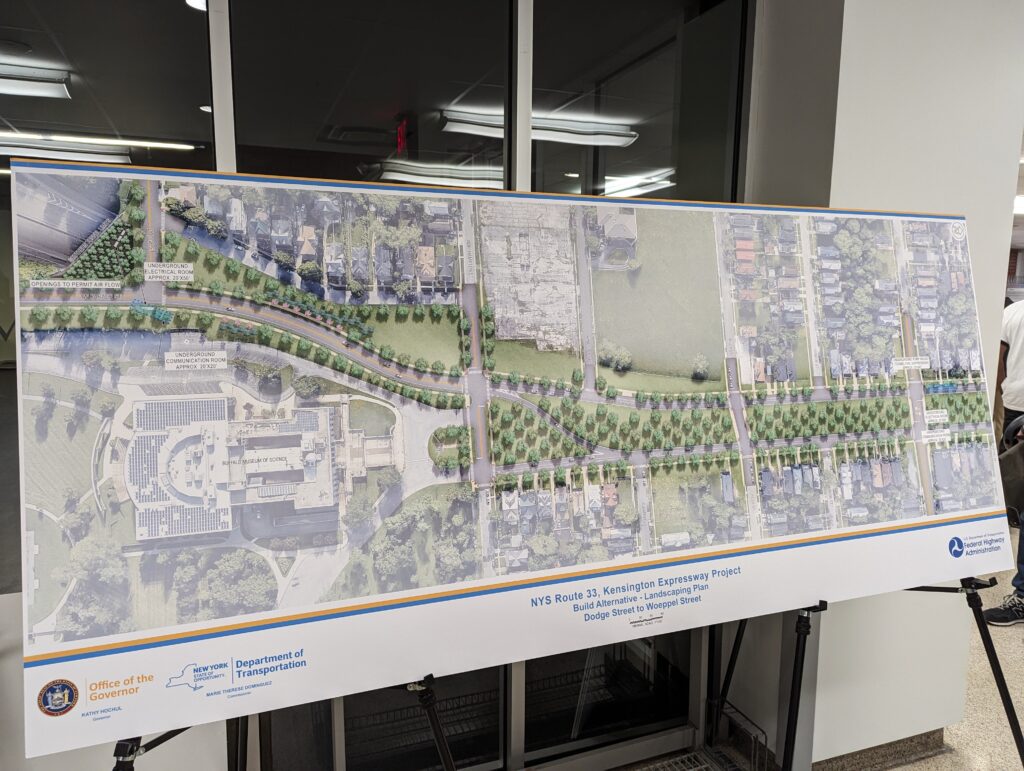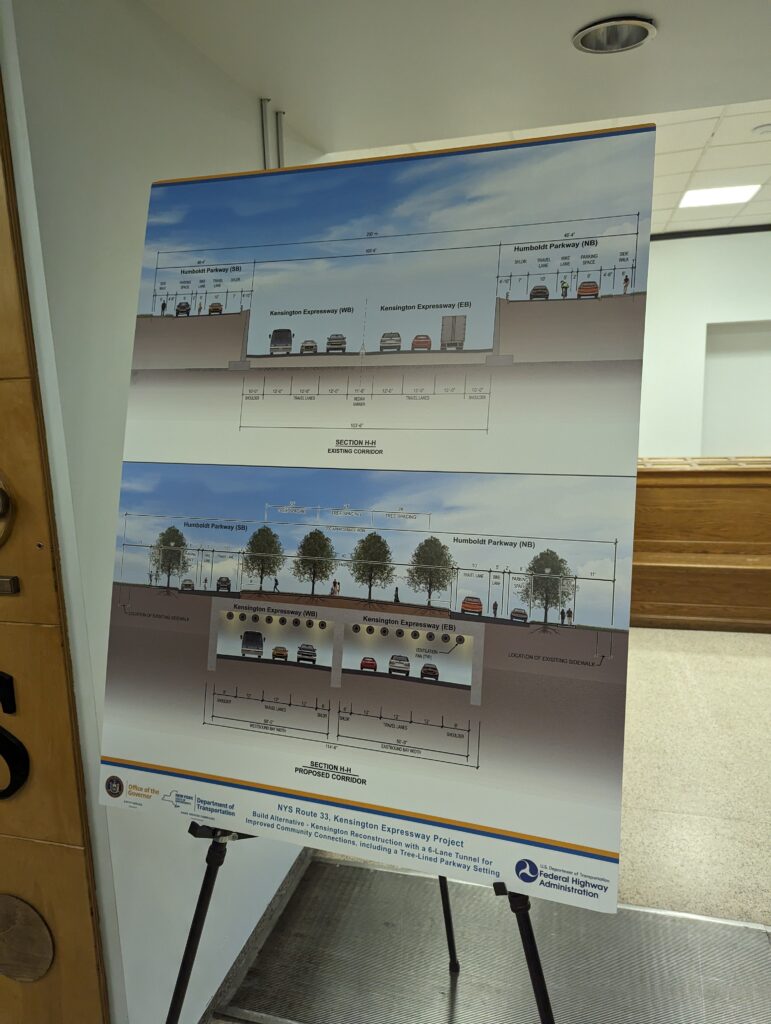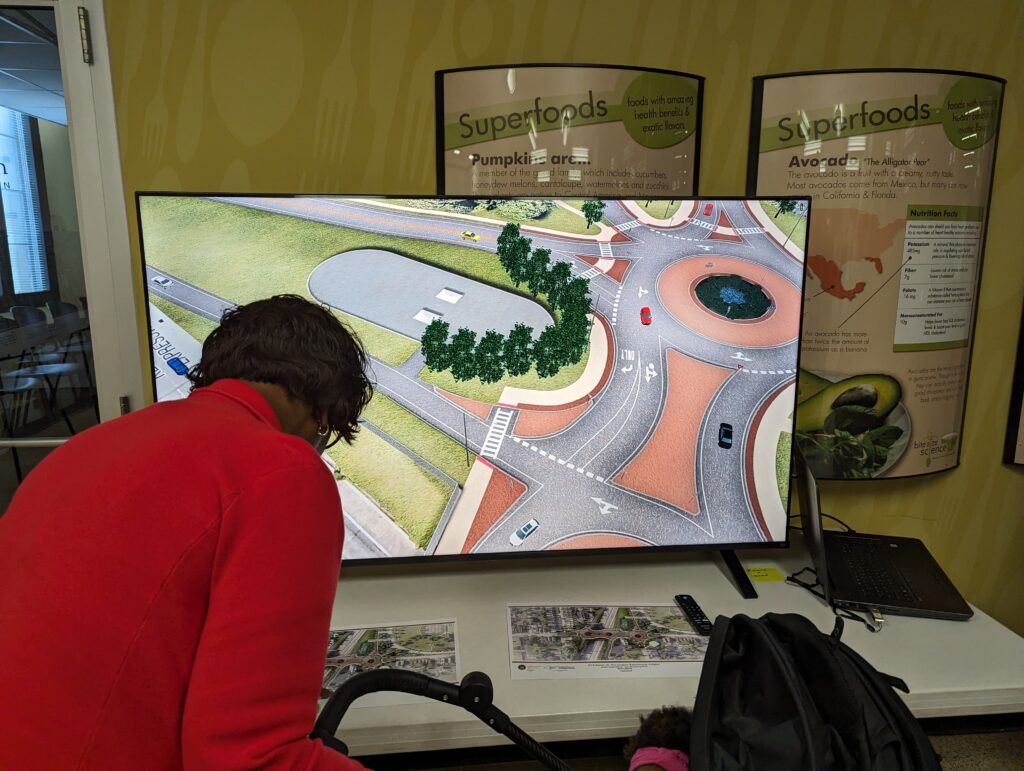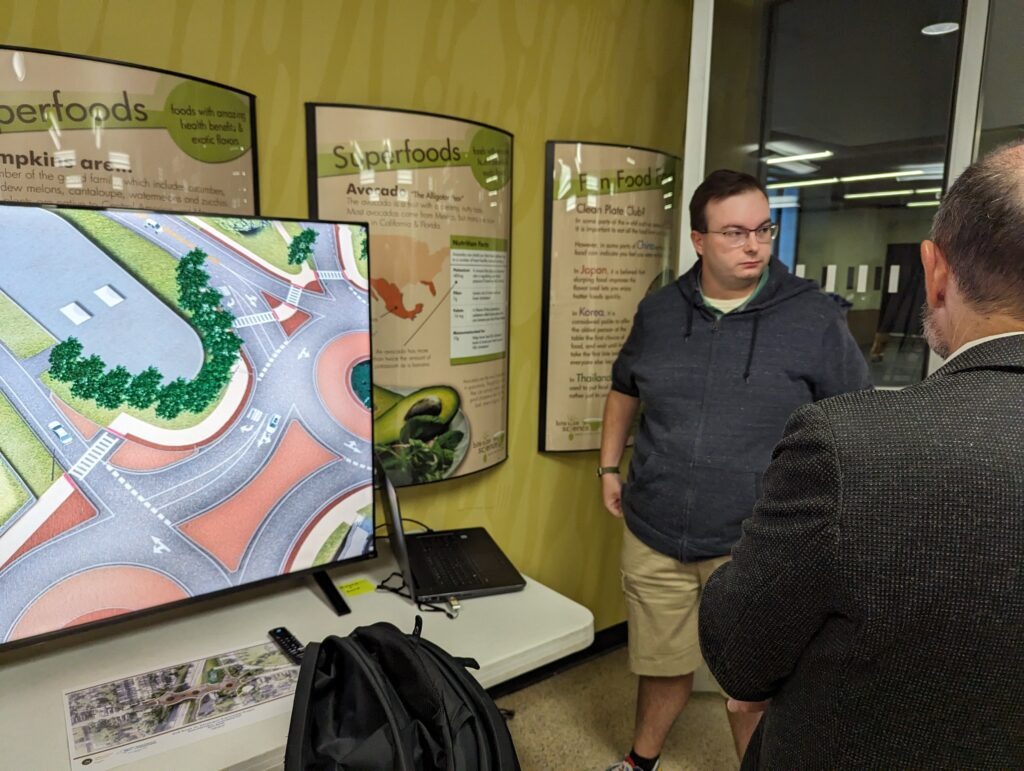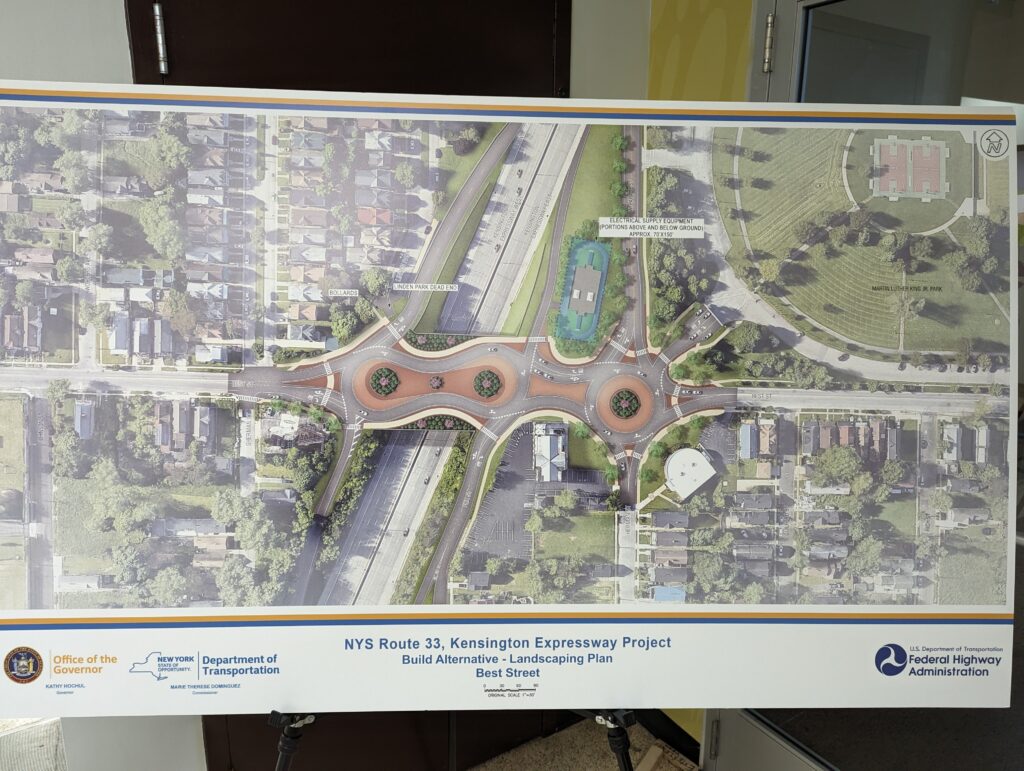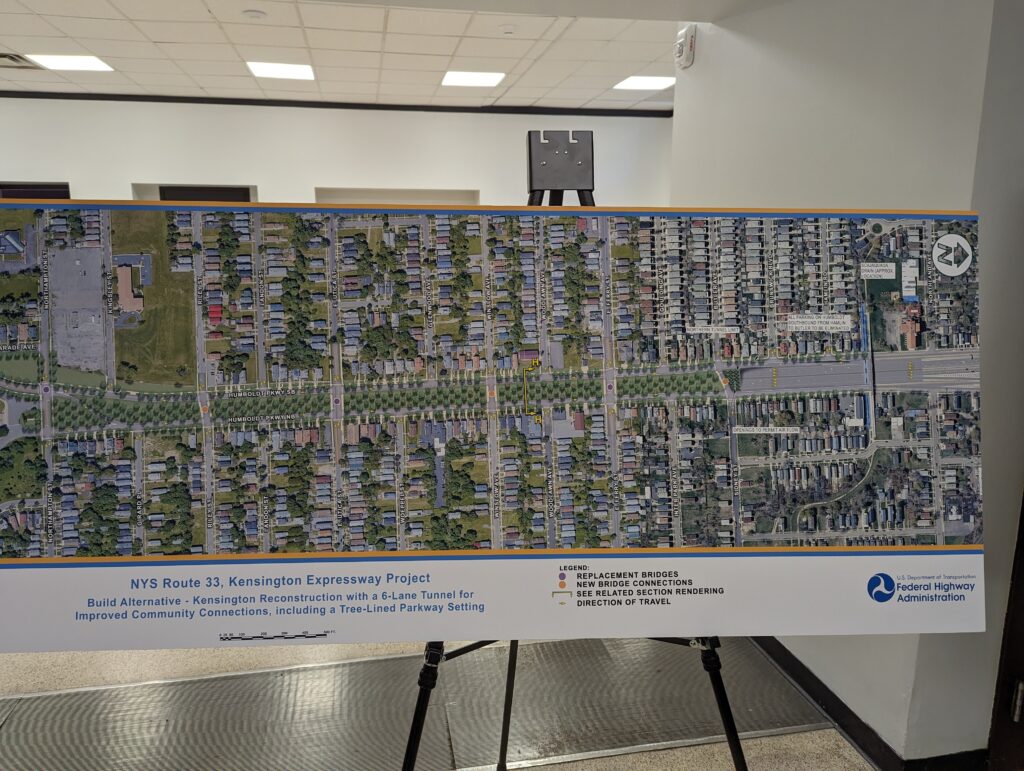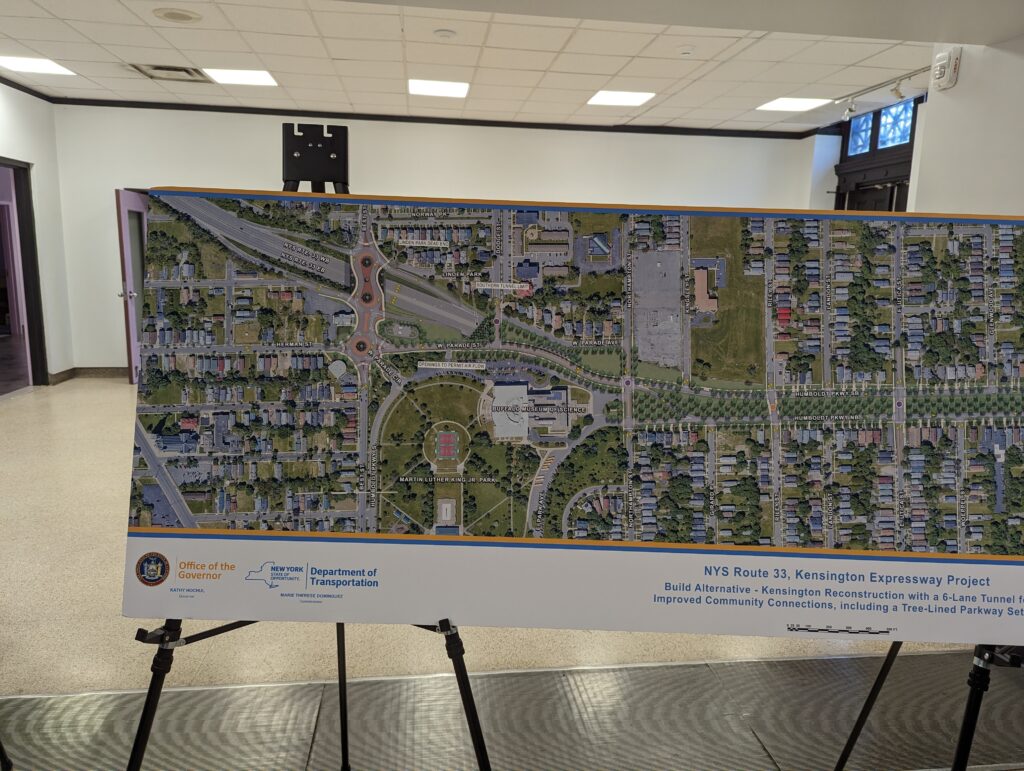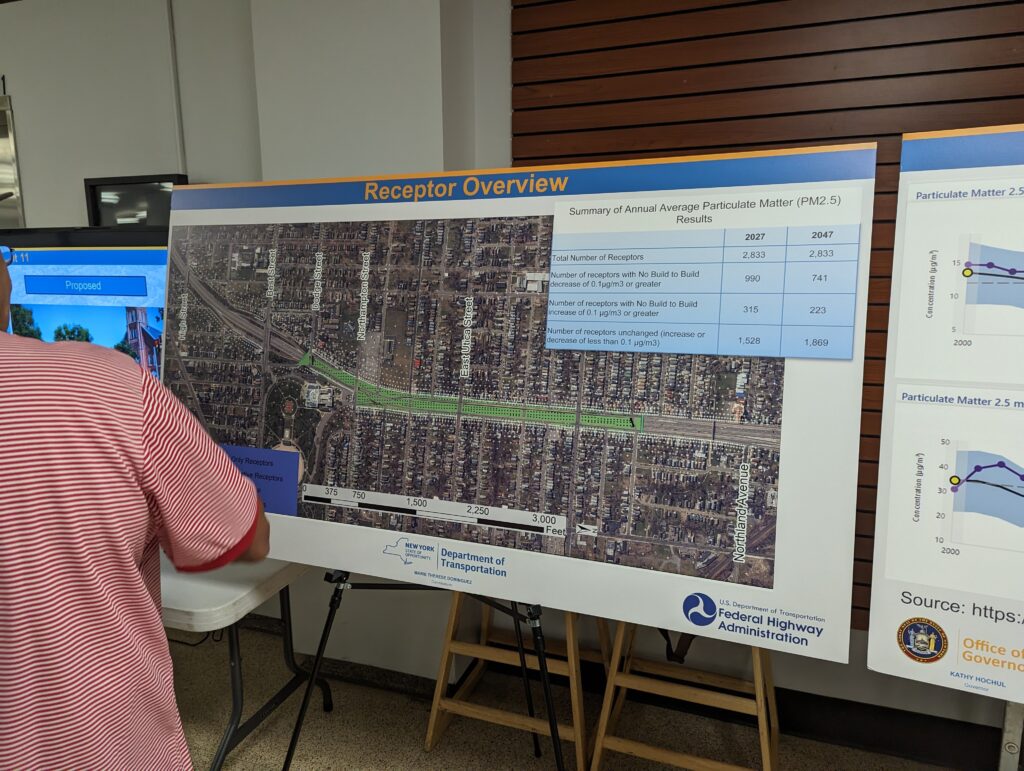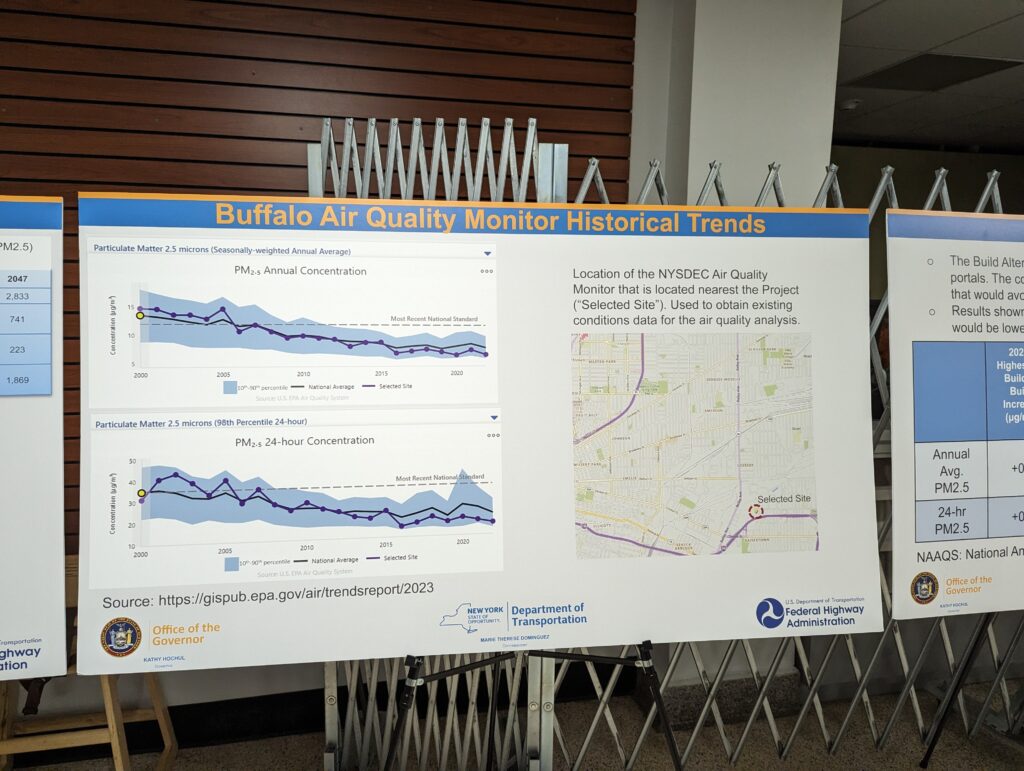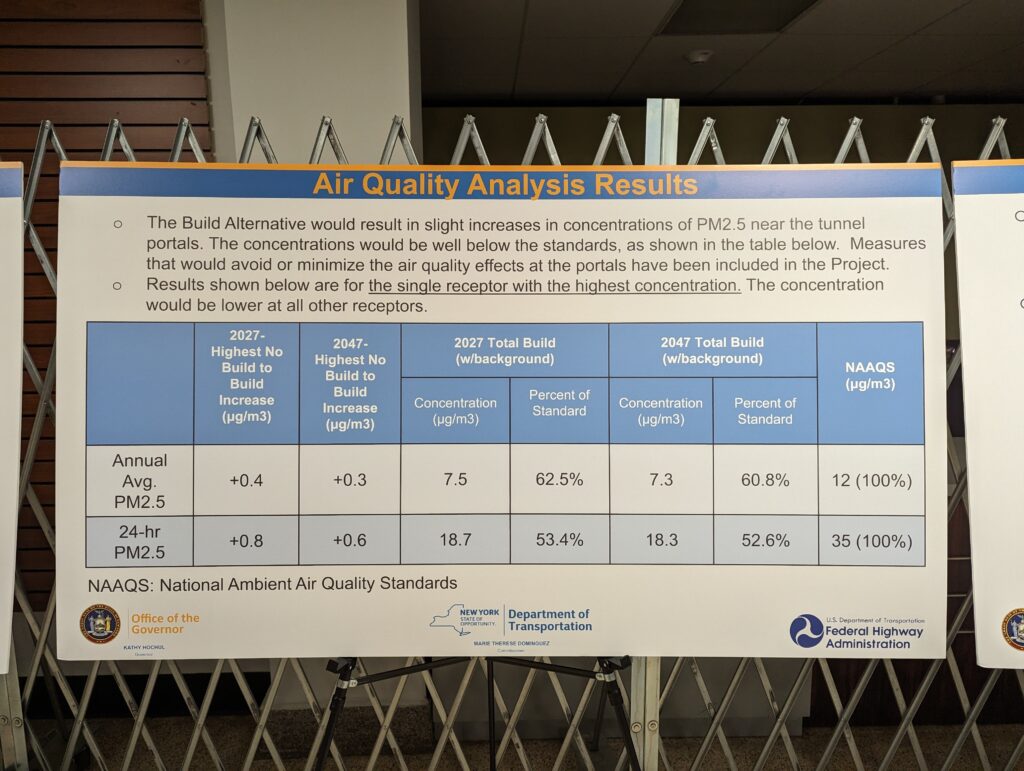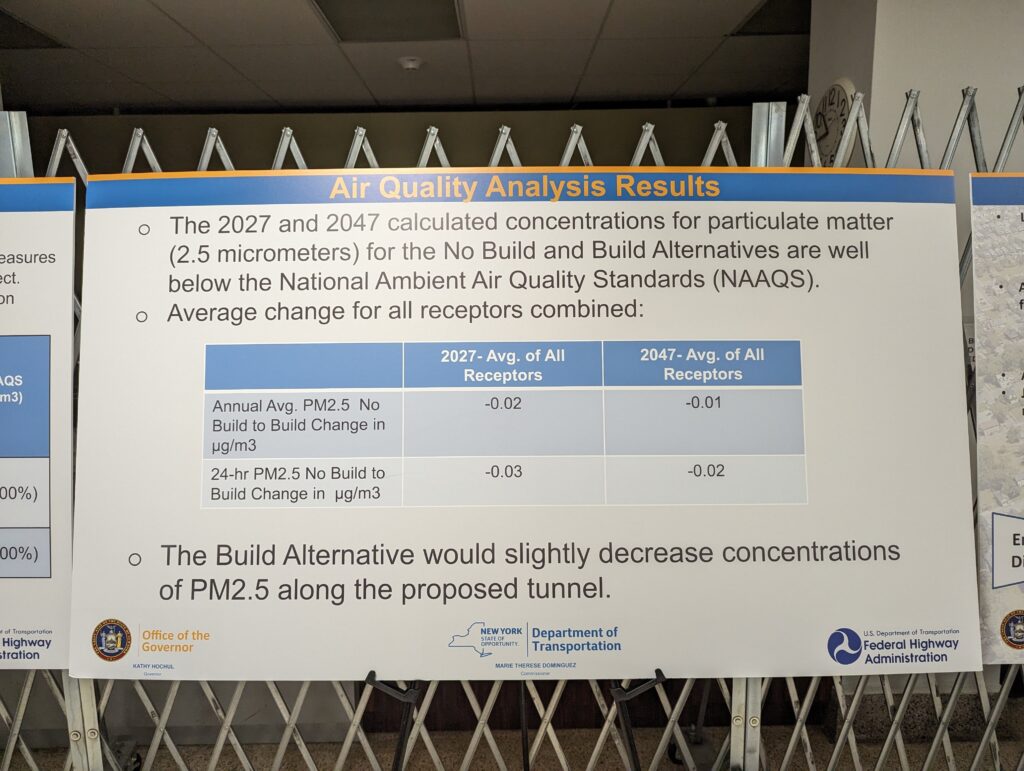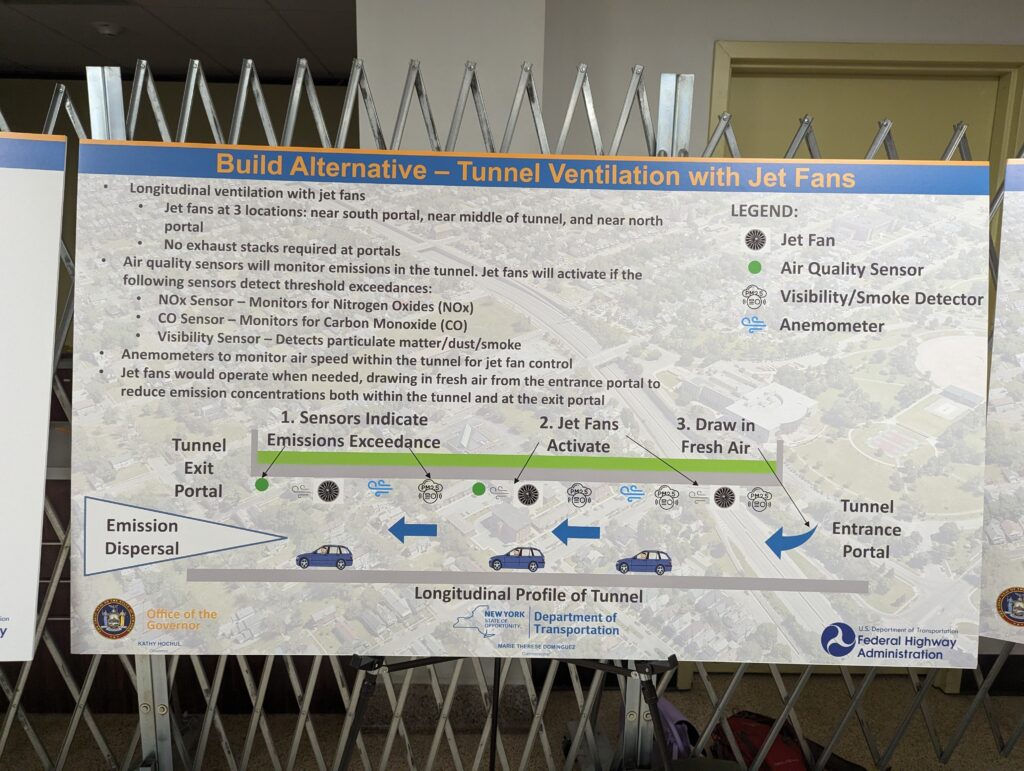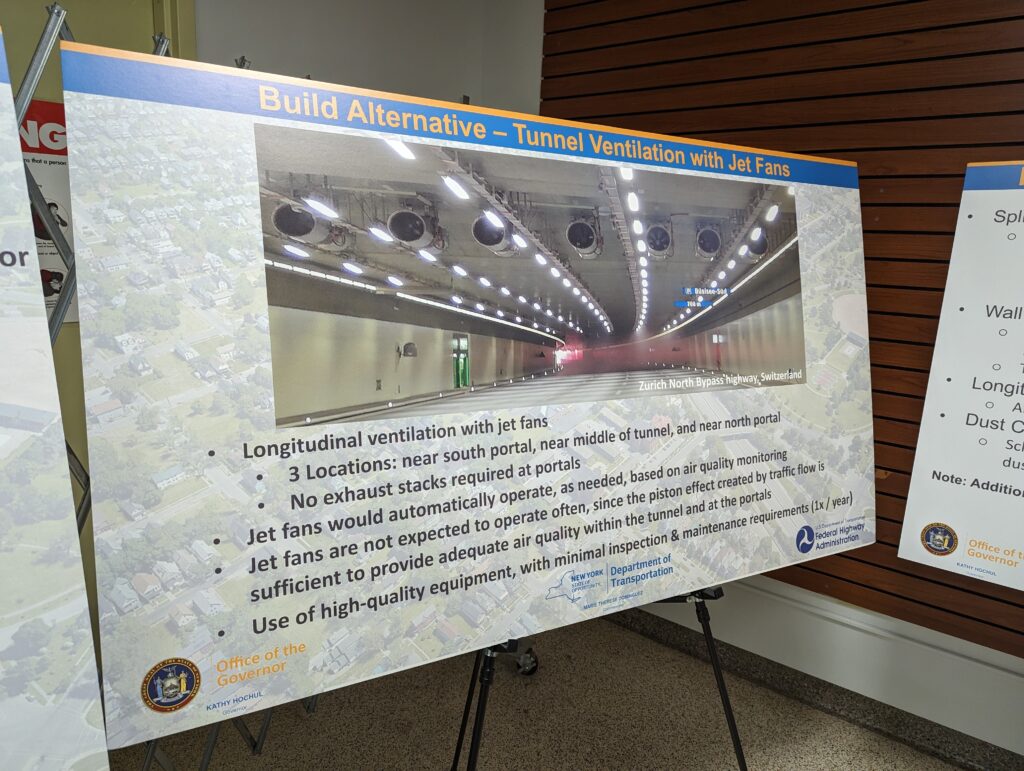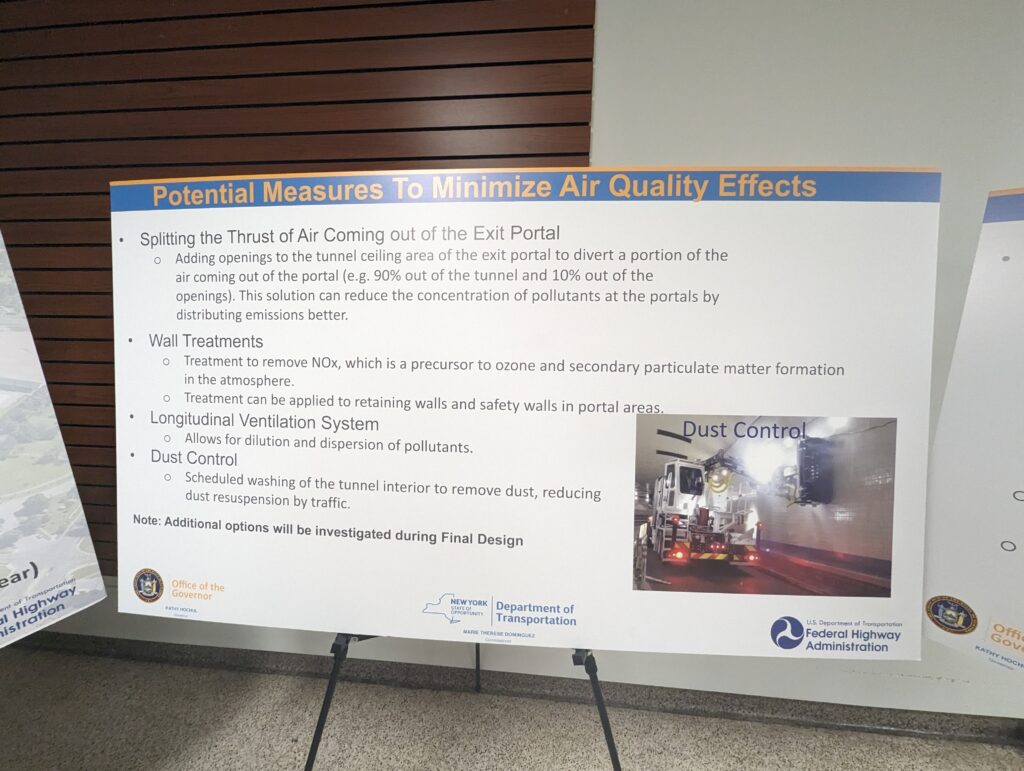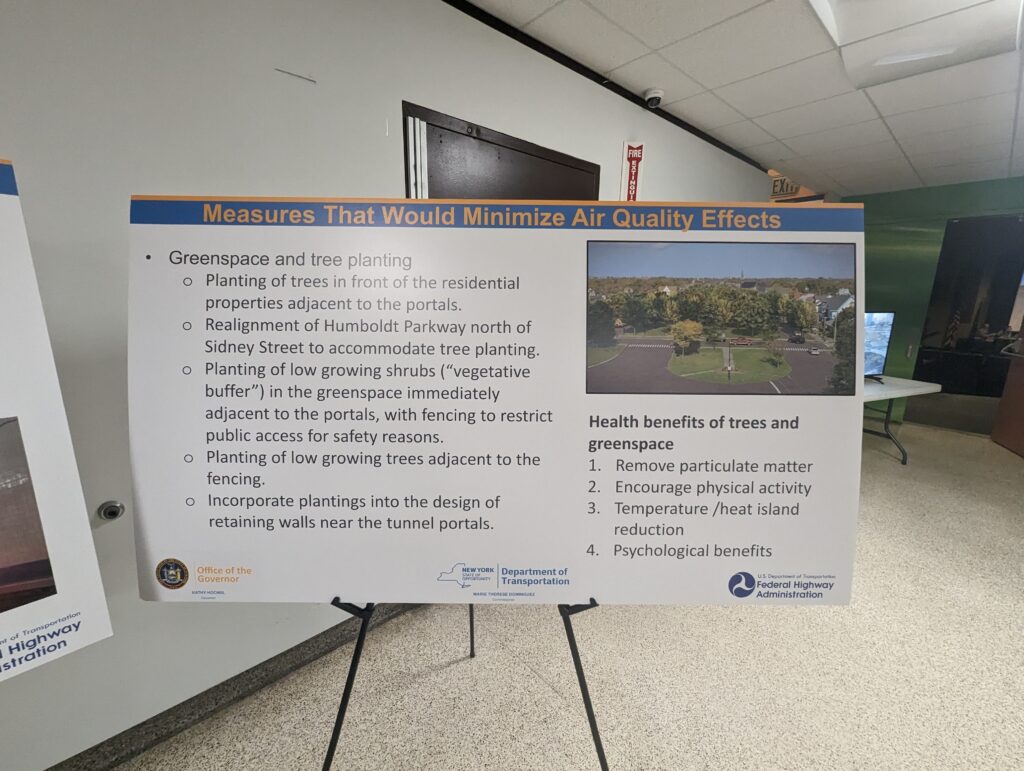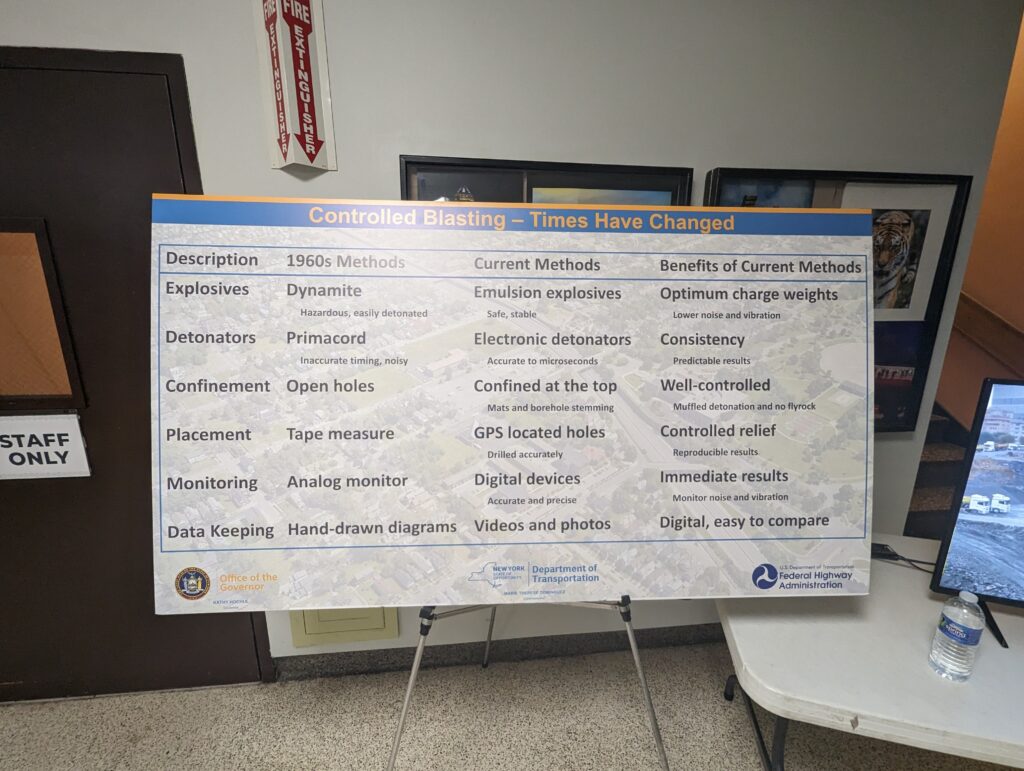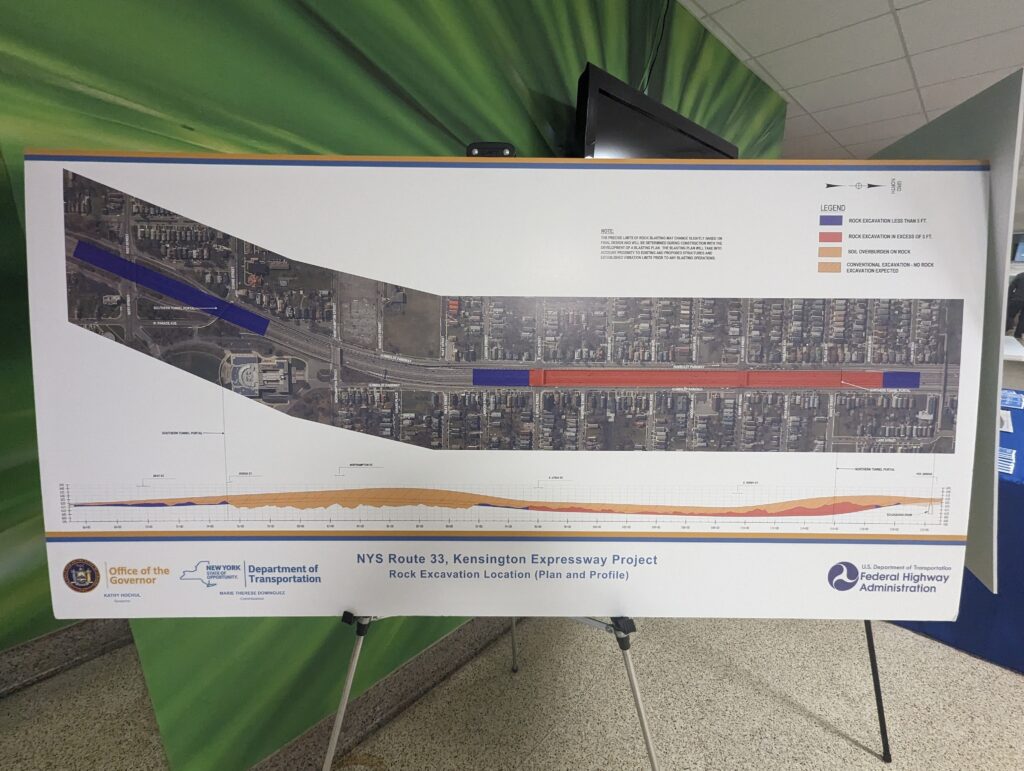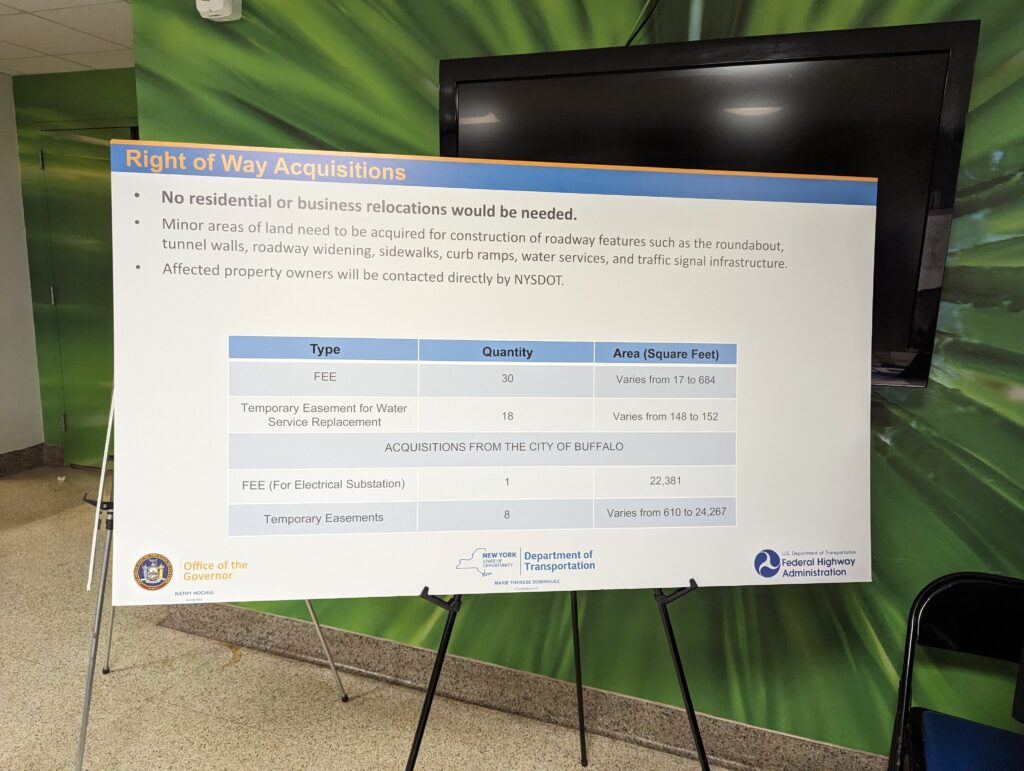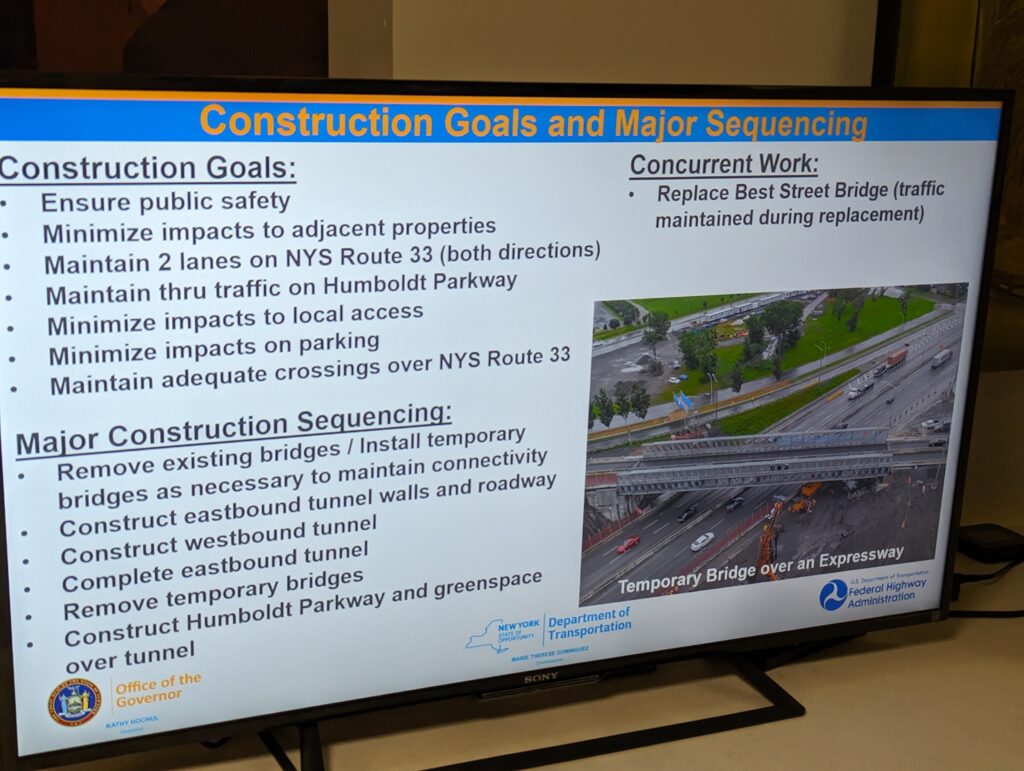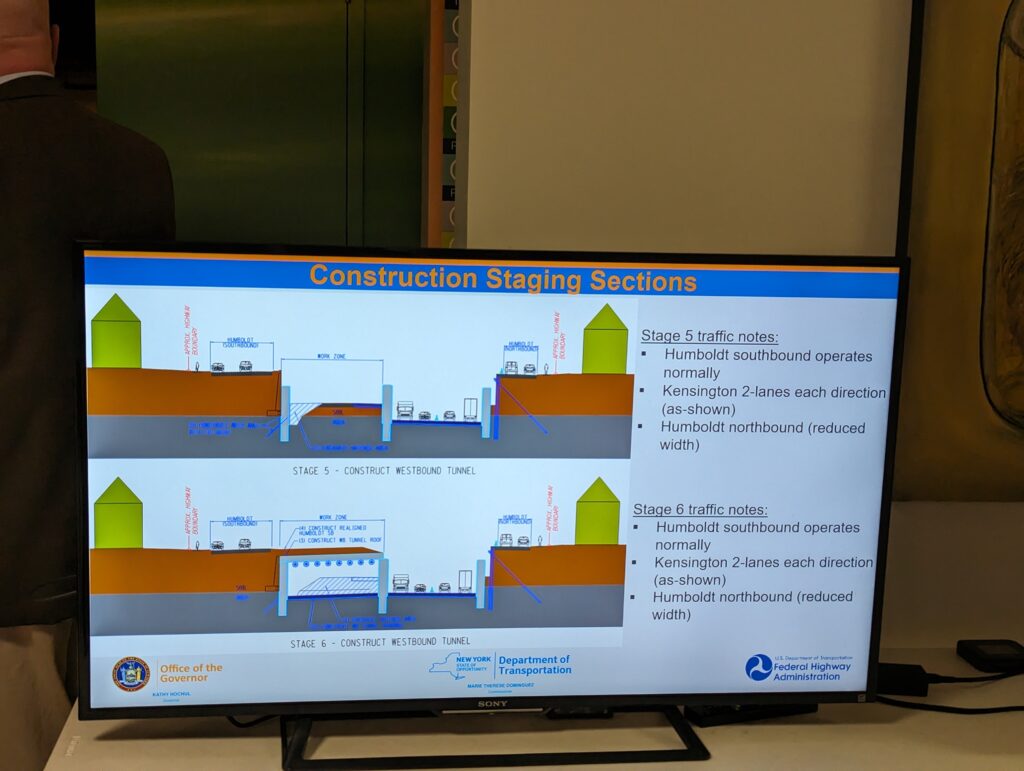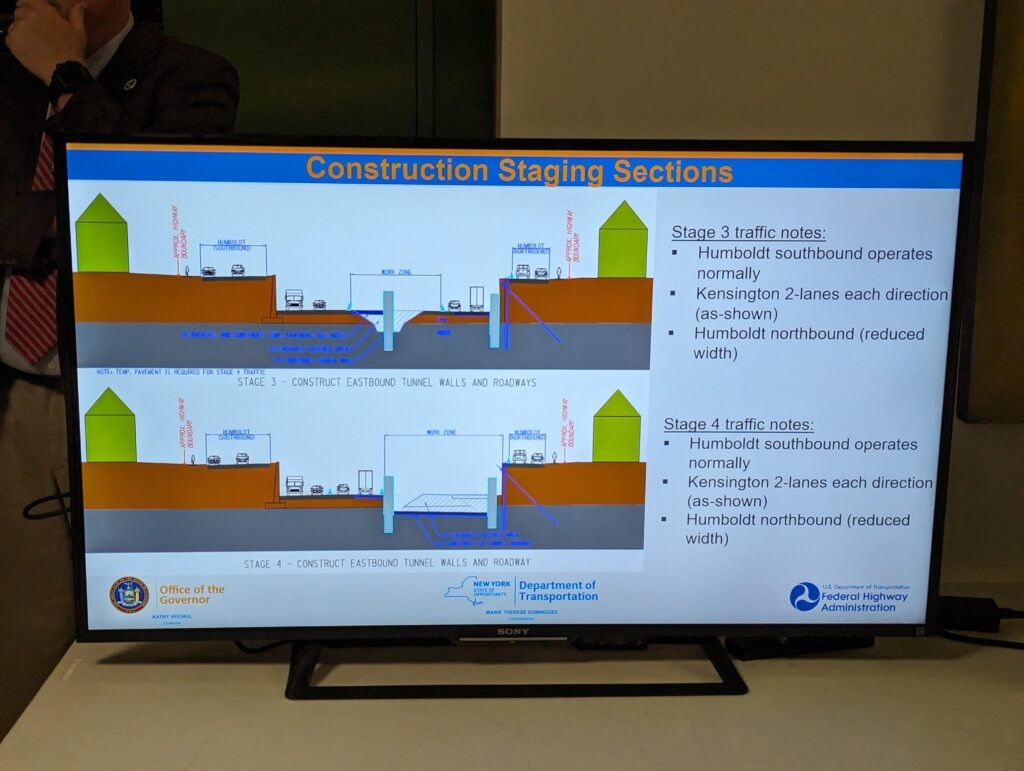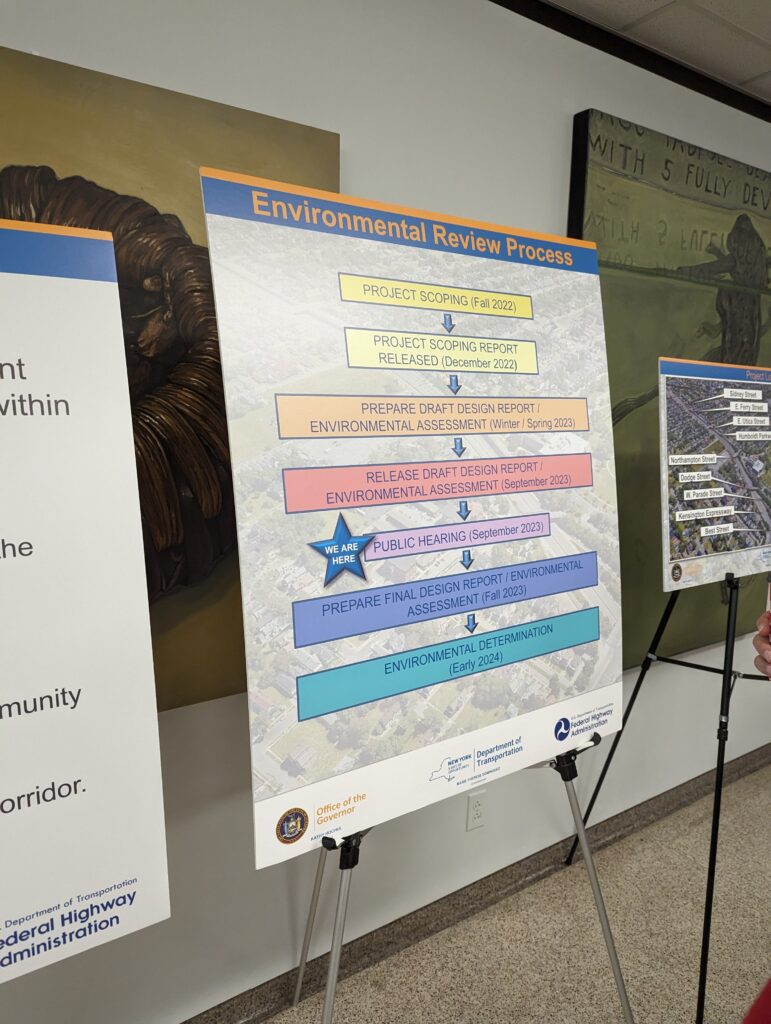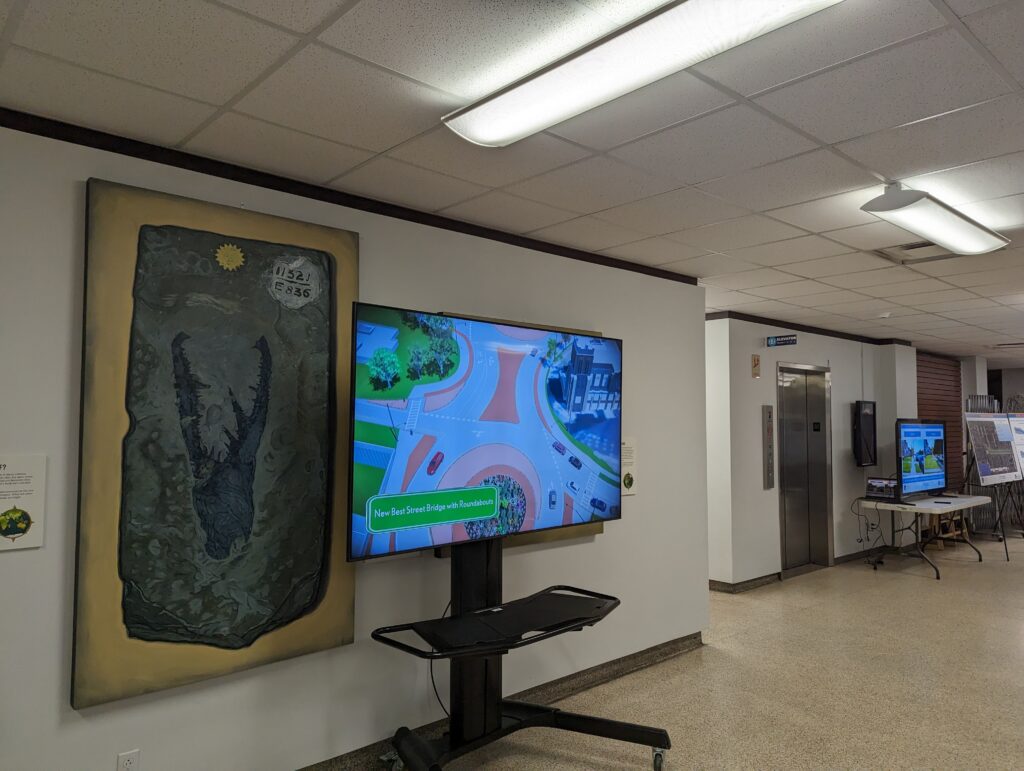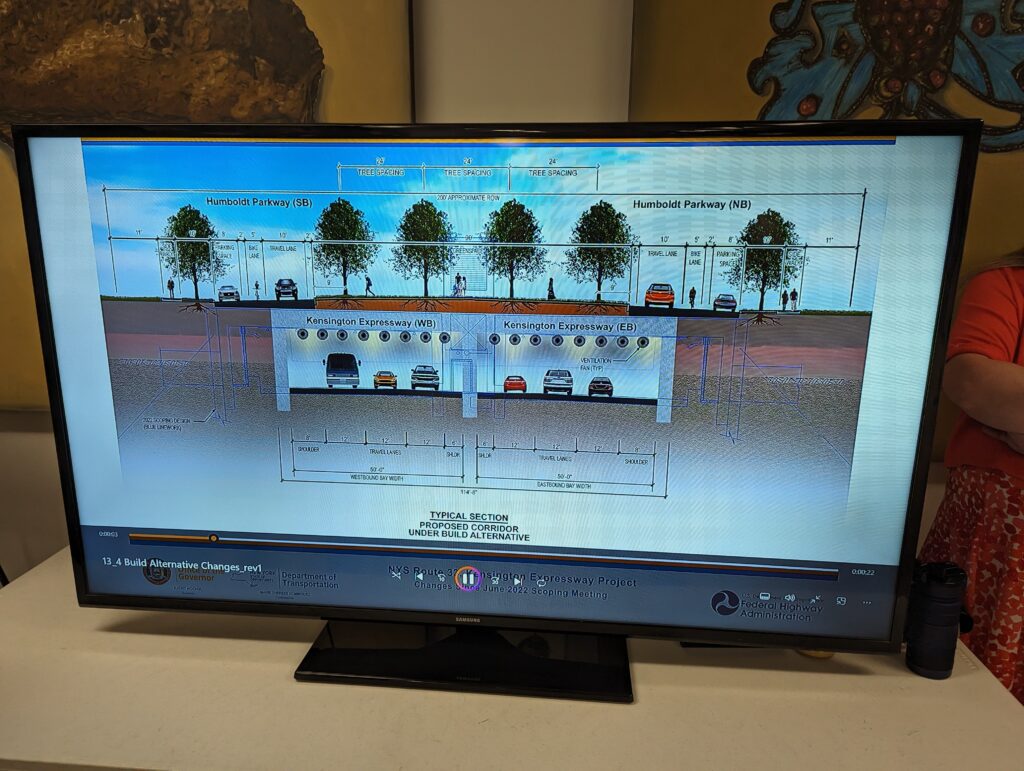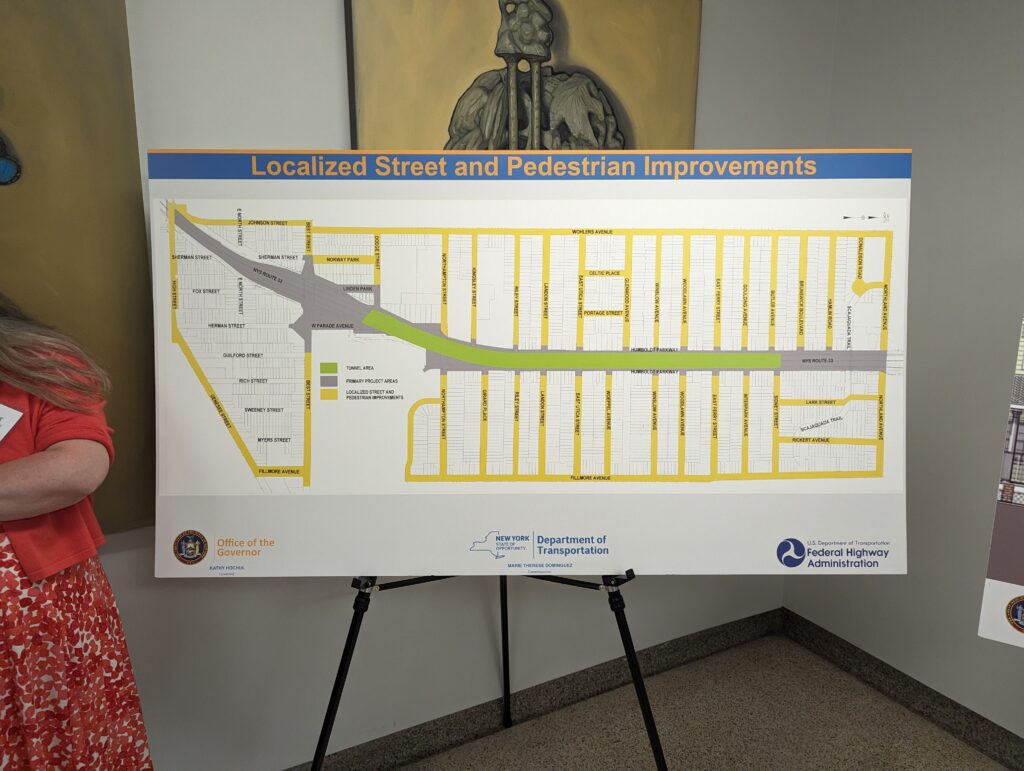Tonight, Wednesday September 27 at The Museum of Science, is a public hearing for the proposed cap over the Humboldt Expressway.
It’s the first time since 2018 that there will be an audience capable of making comments for the panel and entire room to hear.
430PM – 8PM.
We encourage you to attend and make your voice heard on a project that will cost $1-2billion to dig the expressway down deeper, rebuild its retaining walls, and install a cap over the section between Ferry Street and Best Street – roughly 1.1 miles.
Details.
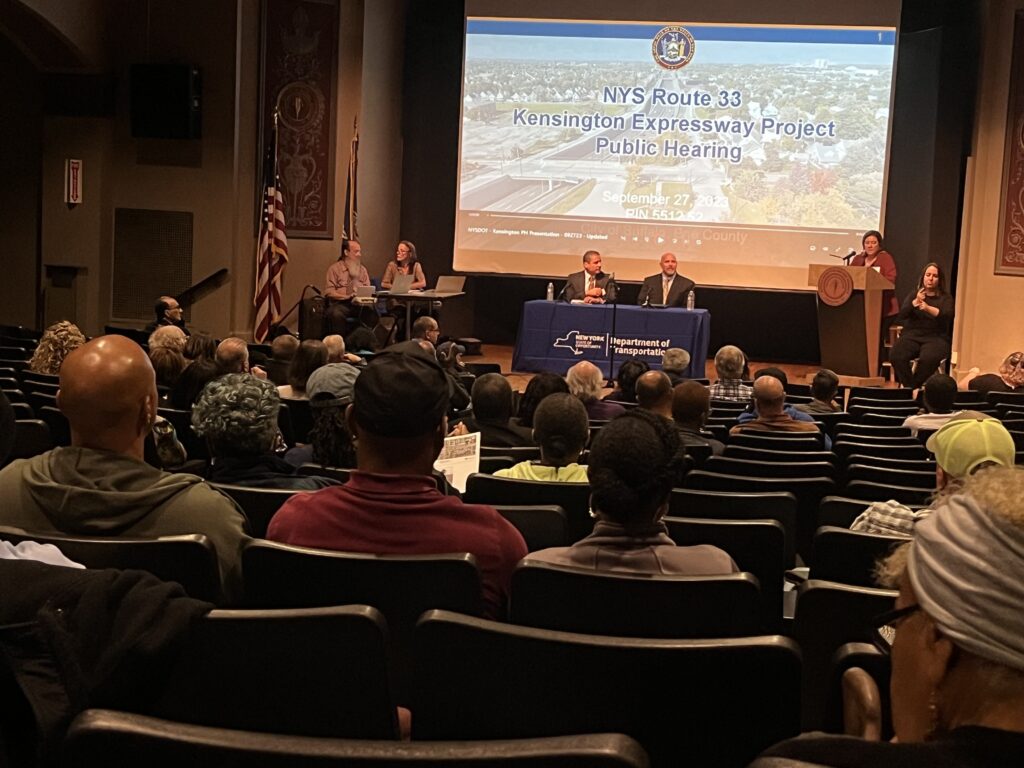
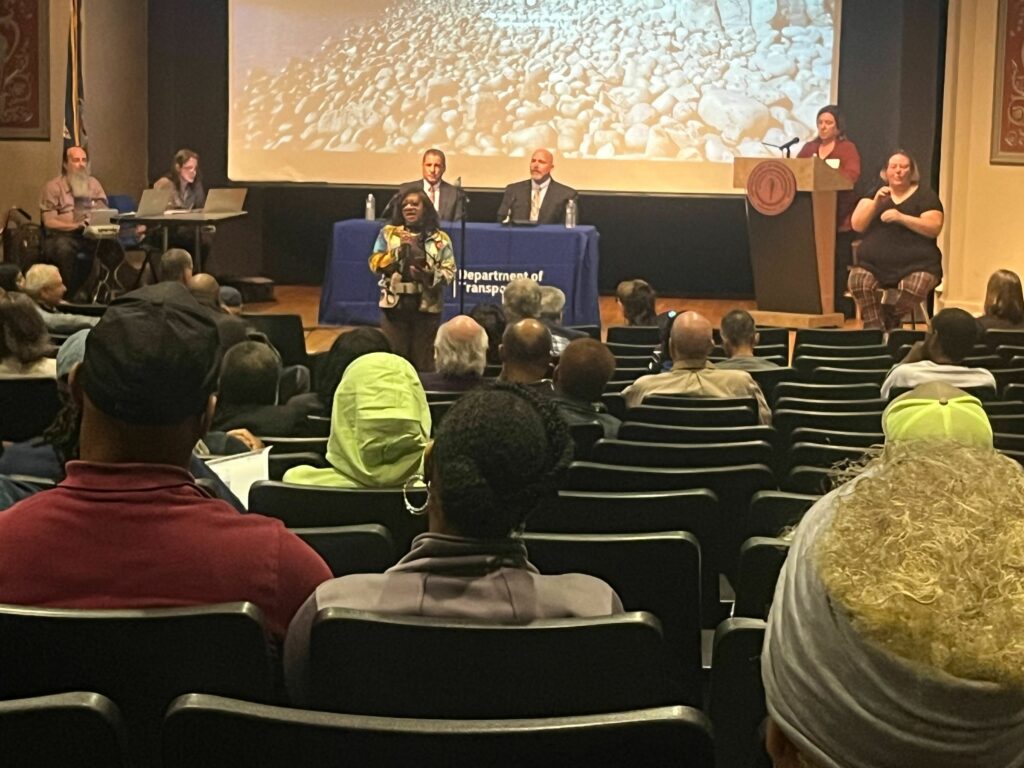
We attended the midday meeting today, and you can see photos from that engagement below. First, here’s the letter we sent to the NYS DOT. We see problems with the designs and we want to see it improved.
June 29, 2023
GObike Buffalo
313 Broadway St
Buffalo NY 14204
RE: Kensington Expressway Cap Project Feedback
GObike Buffalo offers the following feedback on the most recent iteration of the Kensington Expressway Cap project Build Alternative. Our input is informed by both professional experience in designing safer streets for all types of road users, and by personal experience as a team of people who personally depend on biking, walking, and public transportation as our primary forms of transportation.
1. The dual objectives of reconnecting the community by creating continuous greenspace while also maintaining “the vehicular capacity of the existing transportation corridor” is so specific that it constrains alternatives.
2. The objectives say nothing about reducing the health and environmental impacts experienced by those that live in the surrounding neighborhood.
a. The project purpose indicates that the project should improve compatibility of the corridor with adjacent land uses, which should necessitate study of the health and environmental impacts negatively impacting households on Humboldt Parkway.
3. Assuming that vehicular capacity must be the same violates the CLCPA because it fails to consider the impact of maintaining traffic capacity on the state’s climate goals. This project must comply with CLCPA section 7 and the NYSDOT must “consider whether such decisions are inconsistent with or will interfere with the attainment of the statewide greenhouse gas emissions” goals. Additionally, the project area is located within a “Disadvantaged Community” for CLCPA purposes. This means that NYSDOT should look for ways to reduce traffic, reduce speeds, reduce overall vehicle miles traveled in order to reduce the overall pollution burden on this community as well as the overall GHG emissions of the roadway.
4. A major takeaway of the Region Central process has been the determination of how many trips originating in “Region Central” are longer than they need to be because people have to
go around the Expressway. This is an important piece of analysis that must be done for Kensington as well in order to understand the true cost-benefit basis for “maintaining the vehicular capacity” of this roadway. How many households must take longer trips to access basic needs because of the highway as a barrier? What is that cost in both emissions and
negative health impacts?
5. The project objectives lack clarity on coordinating and collaborating with the Region Central study for the Scajaquada being conducted by the GBNRTC.
6. Because this project is limited in its scope to just a segment of the highway, it inherently fails to address the health, economic, environmental, and social impacts of the highway in the adjacent neighborhoods outside the project boundaries, but still affected by the existence of the highway.
7. The Kensington Expressway Cap project should be designed in such a way that it is not prohibitive for future parkway restoration or capping work outside of the existing scope of work, especially in relation to the Region Central/Scajaquada Expressway project. Through Region Central, a robust community planning and technical exploration process, th
community in Buffalo has demonstrated a long-term desire to see the full corridor of the 198 and 33 from I-190 to downtown transformed to create stronger community connections, improve public health, foster opportunities for non-automotive transportation options, and repair inequitable investment patterns from the last 70 years. Although the Kensington
Expressway Capping project scope does not extend north to the 198, the infrastructure being changed or built in this project should not impede future redevelopment of the 198 according to the recommendations of the Region Central process.
8. Streets in surrounding neighborhoods that are being improved through the project should be implemented with complete streets principles in mind, including crosswalks, bump outs,
raised intersections, improved sidewalks and protected bike infrastructure. Streets in this focus area that are listed on the City’s Bicycle Master Plan should be improved, at the very least, in accordance with the recommendations outlined in that plan.
9. While the Best Street roundabout proposal is an improvement over signalized intersections, the lack of any type of bike infrastructure will be a barrier to families on bikes who are attempting to get to the park from points west of the expressway. Please explore providing separated bike facilities that offer better connectivity to the park by bike along this route. Because this section of roadway is an important connection between a residential neighborhood and the community’s largest park, a school, and a youth-oriented cultural amenity (Buffalo Science Museum), street infrastructure should reflect that many of the users will be children and families. By not creating a safe, separated bike facility here, you significantly reduce the ease of access for this group of road users who will likely feel it is not safe enough to use.
Riding on the sidewalk should not be a proposed solution, because for bicyclists over the age of 14, it is illegal to ride on the sidewalk. Riding on the sidewalk can also create more conflicts between pedestrians and bicyclists, especially as e-bikes with higher speeds become more prevalent.
10. The jet fan proposal for ventilation is an improvement on the idea of tearing down homes to install ventilation shafts, but still does not solve the problem of improving air quality in the neighborhood. It is our understanding that the proven ways to reduce vehicular pollution are to: (1) reduce the number of vehicles/vehicle miles traveled, (2) reduce vehicular
pollution at the tailpipe through stricter pollution standards for cars, trucks, and buses, (3) reducing vehicular speeds, and (4) reducing traffic congestion.The proposed build alternative does not solve the problem of air pollution caused by the expressway, but instead concentrates the air pollution in parts of the neighborhood that are already not benefiting from the cap. A solution that does not tear down homes, impose ventilation structures on the landscape, or concentrate pollutants into certain areas of the neighborhood should be a core component of this project.
Please clarify how the ventilation options will actually lead to less vehicular pollution from the roadway if the road capacity, speed and congestion are maintained. If the ventilation is meant to emit vehicular emissions higher into the air, there should be modeling to show the dispersion of the air emissions and the effects on both the adjacent community and those residents living further away from the roadways.
11. The bike lanes along the capped portion of Humboldt Parkway are currently proposed as being placed between the vehicle travel lane and the parking lane. However, this solution creates conflicts between vehicles and bicyclists, including people pulling in and out of parking spaces with people on bikes next to them, and people opening their doors into the bike lane while people are riding next to them. A safer alternative is to place a protected bike lane between the grass section of the parkway and the vehicle parking lane. This alternative creates separation between people on bikes and vehicles, reducing chances of conflict. An example of this layout can be seen along Niagara Street in Buffalo. Another option could be placing a path within the planted median. There is historical precedence for this in many of Olmsted’s original designs, even here in Buffalo.
12. Improved transit access either through light rail expansion or dedicated bus lanes should be a key strategy to meet the project objectives and support the mobility needs of a community where a third of the households do not have access to a vehicle.
Sincerely,
Brendan Seney
Planning Director
GObike Buffalo
